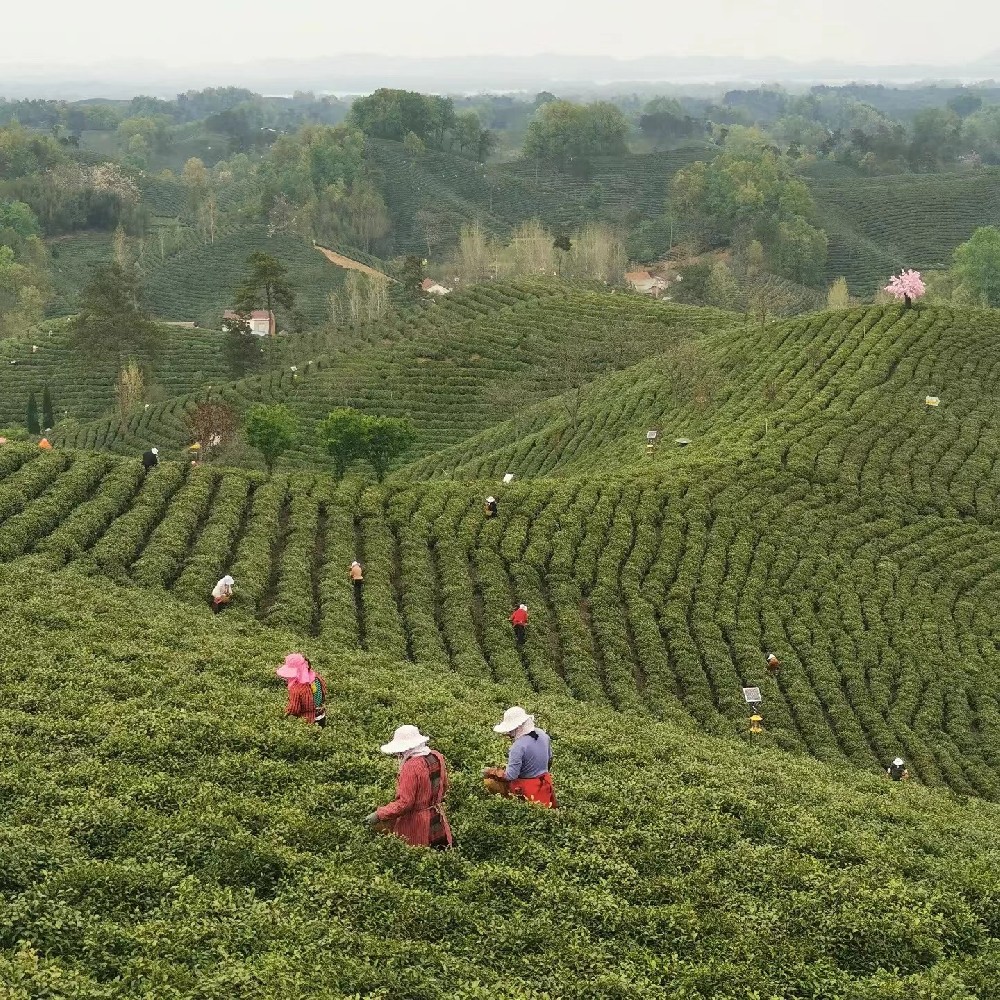
“You can’t make good teas until you make a good person first.”
Rivers and canals crisscross, connecting the mountains and waters. Clouds and mist linger, blessed with abundant rainfall.
The Dabie Mountains region with high latitude and altitude, produces Xinyang Mao Jian tea that take the longest time to grow, mature and harvest. This results in a higher content of amino acids, alkaloids, and tea polyphenol. The Mao Jian tea has a full-bodied flavor and a long-lasting aroma.
Su Dongpo, the great writer of the Southern Song Dynasty, once commended” Xinyang tea ranks No.1 among those in the Huainan region. “Generations of tea makers on this land inherit and carry forward the techniques of growing, picking, and frying Xinyang Mao Jian tea for thousands of years. Each year at the best time of Ching Ming and Grain Rain, they pick young shoots and leaves in early spring. Because tea waits for no one. The key to make tea can be concluded into four sentences: 1. Properly heat the tea; 2. Evenly make the tea strips; 3. Feel the touch of tea; 4. Focus on the fire. The purpose of drying is to remove the water from the tea leaves and to bring out its natural aroma. The temperature of the pot must reach 160-180 degrees. Heat the tea quickly and evenly, avoiding excessive oxidation of the after frying.
Times are changing, publicity and promotion of tea also change from time to time. But Xinyang Mao Jian tea remains unchanged from its natural state full of vitality. It still embodies the harmony between tea mountains and forests. Although we innovate the processing production of tea, what has been handed down from ancient times remains the same.
“You can’t make good teas until you make a good person first.”
A refreshing scent of tea, even across a thousand miles and years can quickly bring people closer. The millennia-old tea mountains, tea roads and tea routes are ushering in new tea makers in the new era. Because of a favorable ecological environment, it contains abundant substances, it possesses a high aroma, strong flavor, and a sweet aftertaste. The key steps are fixation, rolling and three rounds of roasting. The mastery of fire is crucial. Regarding its craftsmanship, as an important part of China’s traditional tea processing techniques and associated social practices, it was inscribed on the Representative List of the Intangible Cultural Heritage of Humanity by UNESCO.